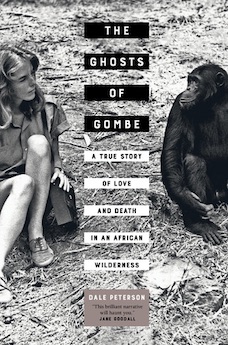By Douglas Keith Candland
‘Gombe’ is both shorthand for the Gombe National Park in Tanzania and for the studies of its resident chimpanzees by Jane Goodall and her colleagues. Although Westerners had systematically observed African primate behavior for at least a century beforehand, Goodall’s observations transformed human interest in ape behavior, especially toward the social lives and personalities of nonhuman primates.
And of human primates as well, as this book promises, for over the years of study at the Gombe, many young people, serious students and the curious, undertook complementary observations of the chimpanzees and baboons. These youth of the late 1960s culture in the West, known for its behavioral freedom, lived under unusual conditions of social and cultural isolation and intimacy demonstrated by shifting interests, academic and social, both among and between themselves. It is to one set of such circumstances, this at a specific time (1967-1969) and involving a set of specific participants, some alive today, that the author writes.
The story is arranged as a mystery regarding the death of one of these workers. As the title promises, ghosts appear twice, maybe three times. The book’s charm and importance, however, is to be found in the sociological and psychological analyses of the Gombe human participants. As such, the book provides a unique and invaluable insight into human interactions when young folk, here engaged in a research enterprise, are bereft of their cultural heritage. The author employs and describes visits with one primary source and several secondary interviews with participants recently, now fifty years after the events.
I must now add that I, the author of this review, am an unwitting participant in the social and academic mix, a fact that can be regarded as salubrious or dangerous. Much of the working material available to the author, Dale Peterson, appears to have come from a single source, this source-person a mainstay in the social adventures of the Gombe observers in this two-year slice of what became a long-term enterprise.
This person is the late Geza Teleki, who was mortally ill during the later interviews. I served on his masters and doctoral dissertation committees as an outside examiner and thus, from the security of rural Pennsylvania, was told of the events by Teleki not in retrospect but concurrent with the events and also, years later, during the preparation of the theses. I also edited Teleki’s book about meat-eating of baboons by chimpanzees and discussed Gombe affairs and edited the book written by another participant, Tim Ransom, whose Gombe time involved observing baboons. It may be argued that this special, if truly external, knowledge of mine makes for a muddled reviewer; however, it also offers a third voice not of a direct participant but of one who over the time both during and after the events described was advised of the ever-changing observations and camp affairs mostly, but not solely, by Teleki.
At its heart, this is Teleki’s apologia, while the book is a masterpiece of clear, inviting, and descriptive writing. By concentrating on this small slice of time and its events, the author provides the reader with the opportunity to reflect on an assortment of matters of importance to students of animal behavior and those interested in culture and social psychology.
These concern, mostly, the involvements of racially white young people, US raised mostly; their British counterparts, older, far more competent in the principles of academic ethology; the African folk, who ran the Gombe Park, cooked, cleaned, felled trees, and, of course, had their own views of goings-on; the chimps and baboons themselves (oh that they would have collected impressions and observations of their human observers, notes to be typed up at the British Museum perhaps). And, although the reader must be attentive to find it, also of importance is the serious difference between observers who see their animal objects as friends to be admired and cherished, perhaps the love returned, and those with academic training who are seen as denigrating nature by collecting and analyzing data and testing hypotheses. (The author accepts the former view; this reviewer represents the later.) The mystery of the human death remains unsolvable. The concluding chapter, in which hypotheses regarding the agent of death are presented, is rash and, to this reviewer, represents chiefly Teleki’s unsubstantiated suspicions based more on personality than evidence.
What the book contributes is a brilliantly conceived exploration of the psychology of human communities gathered under unusual, if not unique, circumstances—of humans watching humans, whites watching blacks, natives watching ‘Europeans’, chimpanzees watching people, two contrasting philosophies of understanding ourselves and other animals, and, of course, a little sex and adultery, but only enough to enhance understanding of the observers’ relationships.
If there were a literary prize for re-created history, I would nominate this splendid work, for it educates while defying any separation between fiction and nonfiction. As if to accent the shadow between the two forms, although authors of books and articles are given in the text with dates of publication, there is no reference list that would allow the reader to consult the referenced work. The list of persons and animals mentioned (Dramatis Personae) is comprehensive and essential to the reader.
Douglas Keith Candland (ΦBK, Pomona College) is the editor of Review of General Psychology and the Homer P.Rainey Professor of Psychology and Animal Behavior, Emeritus at Bucknell University. Bucknell University is home to the Mu of Pennsylvania chapter of Phi Beta Kappa.




